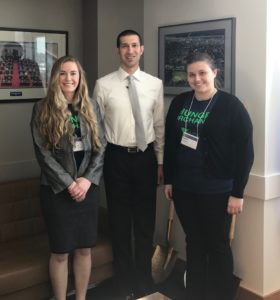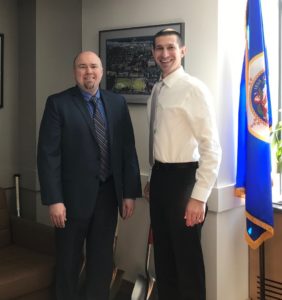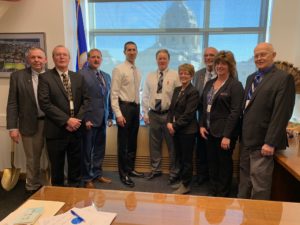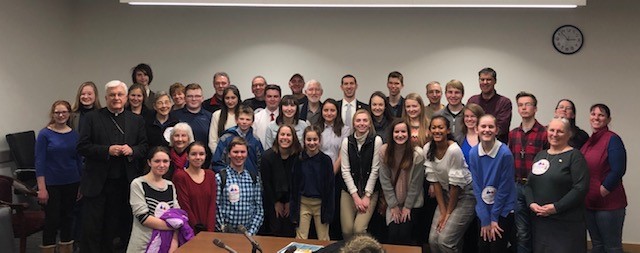Greeting from the Capitol,
It has been a busy couple weeks at the Capitol, especially with the release of Governor Walz’s budget proposal. There is a lot of material to review, and it will take some time to get to the bottom of everything. But for now, here are some of the highlights I have discovered so far. As you read this update, I would appreciate your feedback on the governor’s budget proposal, especially the 20-cent-a-gallon gas tax increase.
Working off the most recent budget forecast that was released in November, the current biannual general fund budget for FY2018-19 is $45.54 billion and the projected spending for FY2020-21 is $47.45 billion, an increase of about 4.2%. Governor Walz is proposing a budget of $49.47 billion for FY2020-21, an increase of 8.6% over the current biennium. When it comes to spending, this is a very aggressive proposal from the governor and as far as I can tell, there are several tax increases, but there are no reforms in his budget to tackle the waste, fraud, and abuse within our public programs.
The item in the governor’s budget that has so far generated the most headlines is his 20-cent per gallon gas tax increase, a 70% increase over the current 28.5-cent per gallon gas tax (this is in addition to the 18.4-cent per gallon federal gas tax). This would give Minnesota the 4th highest gas tax in the country. The governor also ties the gas tax to inflation after three years, meaning there will be automatic gas tax increases every year. In addition to the gas tax increase, the governor is also proposing to raise the vehicle registration tax, the vehicle sales tax, and license plate tab fees.
Republicans spent the last two years working with Governor Dayton to find a bipartisan solution to our transportation infrastructure problems. That work resulted in permanent, on-going funding for roads and bridges using existing revenue sources, mainly the sales tax revenues generated from the sale of auto parts.
Governor Walz’s budget reverses that bipartisan work, and in doing so he transfers over $225 million away from roads and bridges every year. He chooses to backfill that funding with the significant gas tax increase and other vehicle registration tax increases, but studies show the gas tax is a far less secure funding source. According to a recent transportation study, revenue from the gas tax begins to decline each year starting in 2020 (MNDOT Transportation Funds Forecast November 2018, page 9).
As we discuss the next state budget, it is helpful to understand how spending in various issue areas has changed over the last few budget cycles.
My first year in the Senate was 2011, which also happened to be Mark Dayton’s first year as governor. That year we faced a historic $6 billion budget deficit. It was a challenge, but the legislature worked with Governor Dayton and were able to successfully close that gap without raising taxes. Our final biannual budget was $34.3 billion. It was a monumental achievement. As I mentioned above, projected spending for FY2020-21 is $47.45 billion. This means that over the eight years of Governor Dayton’s administration, general fund spending increased almost 40%.
Below is a breakdown of how spending in the top 5 budget areas has changed over the last eight years, based on the November budget forecast. It’s important to note that the numbers listed for FY2020-21 are only projections and an updated budget forecast will be released on February 28. Once the February forecast is released, the legislature and governor will have to work together to finalize a balanced budget. The November forecast showed a projected budget surplus of $1.5 billion (mostly one-time money), which I expect to be lower in the February forecast. Finally, transportation funding is not listed below as the majority of this funding is dedicated funding and not included in the general fund.
|
Issue Area |
2012-2013 budget | Projected 2020-2021 | Projected $ increase | Percentage increase |
|
E-12 Education |
$13.638 billion | $19.6 billion | $5.962 billion |
43.7% |
|
Health and Human Services |
$11.372 billion | $14.904 billion | $3.532 billion |
31.1% |
|
Higher Education |
$2.565 billion | $3.255 billion | $690 million |
26.9% |
|
Property Tax Aids and Credits |
$2.864 billion | $3.709 billion | $845 million |
29.5% |
| Public Safety and Judiciary | $1.807 billion | $2.35 billion | $543 million |
30.0% |
Constituent Visits
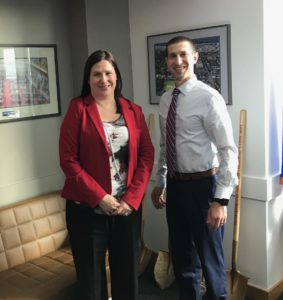 Houston County Judge Carmaine Sturino
Houston County Judge Carmaine Sturino
Students from Minnesota State College Southeast
Athletic Trainers Day at the Capitol
MiEnergy Cooperative Board Members
Local Township Officials
Catholics at the Capitol Day on the Hill
If you don’t already follow me on Facebook, please give my page a Like. This is a great way to stay on top of the latest news from the Capitol! Visit my page here: https://www.facebook.com/SenatorJeremyMiller/.
As always, your feedback is extremely important to me and I encourage you to share your input on the issues being discussed here at the Capitol. If you have any questions, thoughts, or ideas, please send me an email at sen.jeremy.miller@senate.mn or call my Capitol office at 651-296-5649. It’s a great honor to serve as your State Senator.
Sincerely,
Jeremy

